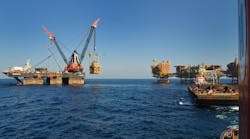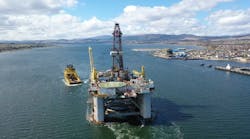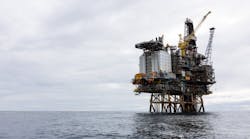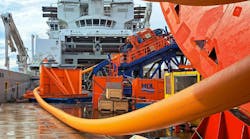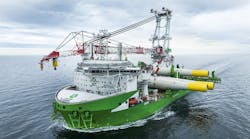Investing in R&D is essential for the offshore industry because technology is the enabler that changes the face of operations and moves the industry into frontier areas. With the offshore industry constantly innovating and developing new technologies that will allow E&P activities to move into previously uncharted territory, it is important for new concepts to be evaluated and validated.
Validation is an important part of the process of introducing a new technology. When it is completed and a concept is approved, official acceptance means the plans, reports, or documents have been reviewed for compliance with one or more of the required rules, guides, standards, or other criteria. In a case where there are no defined rules or guides specifically applicable to a novel concept, it is the role of a classification society to identify the most appropriate criteria in existing guidelines. And when guidelines do not exist, one of the roles of the class society is to develop them.
It is critically important to evaluate principal safety considerations and potential hazards when new concepts are introduced.
Approval in Principle (AIP) is a process in which a statement is issued affirming that a proposed novel concept design complies with the intent of the rules and appropriate codes. At the AIP stage, risk is assessed on a high level through qualitative techniques.
From a practical standpoint, the first step is to understand the new concept. Once the concept is understood, it is important to identify "novel" areas of the design that go beyond anything previously built or beyond anything envisaged in the existing rules and other published requirements.
Next, engineers identify hazards so they can establish that, as a minimum, the same overall level of safety contained in existing rules or in other standards is achieved. They then seek existing rule requirements that are most applicable to the identified hazards in the novel concept and use those rules to evaluate the new idea.
The next step is to find equivalent areas of the design that can be evaluated with a certain degree of flexibility using existing rules, standards, and codes. For areas of the design for which no standards exist but for which the classification society deems independent evaluation to be prudent, the class society develops new standards based on experience as well as expert input from industry and academia to help guide the effort. Finally, engineering first principles are applied to certain areas of the design that can be evaluated only in this manner.
Engineering within the AIP process progresses to the point of demonstrating that likely failure modes and consequences have been identified and have been considered in the concept design. At that point, the need for proof or model testing and data gathering is identified as is any further need for refined risk assessment or engineering analysis.
The value in this process is that it provides a consistent approach to evaluation so that all new technology concepts follow the same validation before they can be granted AIP. When AIP is granted, it confers approval on behalf of the class society that a concept appears to be capable of further development in accordance with established standards and sound engineering principles.
Companies that are just beginning to explore the possibilities of a new technology or concept often approach a classification society to get an educated and informed third-party perspective. The value of gaining AIP from a class society is that a company that is introducing a new technology can produce a document issued by an unbiased entity attesting to the acceptability of the concept at that stage of development for pursuing and achieving classification.
When AIP has been granted, the company is better equipped to move into the next phases of the project, which involve detailed design, advanced risk assessment, and testing identified in the conceptual phase. At this point, the traditional class society role takes the form of design review and survey, ultimately resulting in Class approval. Generally, Maintenance of Class is performed in the traditional sense as well, with periodic surveys carried out to validate renewal of the Class Certificate, although for a novel concept, Maintenance of Class might require a modified or expanded survey frequency or scope as a condition of Class until the concept has built up satisfactory service experience in the field.
As offshore operations expand into more exacting environments, technologies will continue to be developed to contend with demanding new operating conditions. Because it is essential for novel technologies to be validated before they move into mainstream operations, AIP is a valuable step in the process.
R&D will undoubtedly keep extending the boundaries of what is possible in offshore operations. And AIP will continue to play a central role in helping the industry move safely into these new and technically challenging frontiers.
William J. Sember
Vice President, Global Gas Development, ABS
This page reflects viewpoints on the political, economic, cultural, technological, and environmental issues that shape the future of the petroleum industry. Offshore Magazine invites you to share your thoughts. Email your Beyond the Horizon manuscript to David Paganie at[email protected].
Offshore Articles Archives
View Oil and Gas Articles on PennEnergy.com
